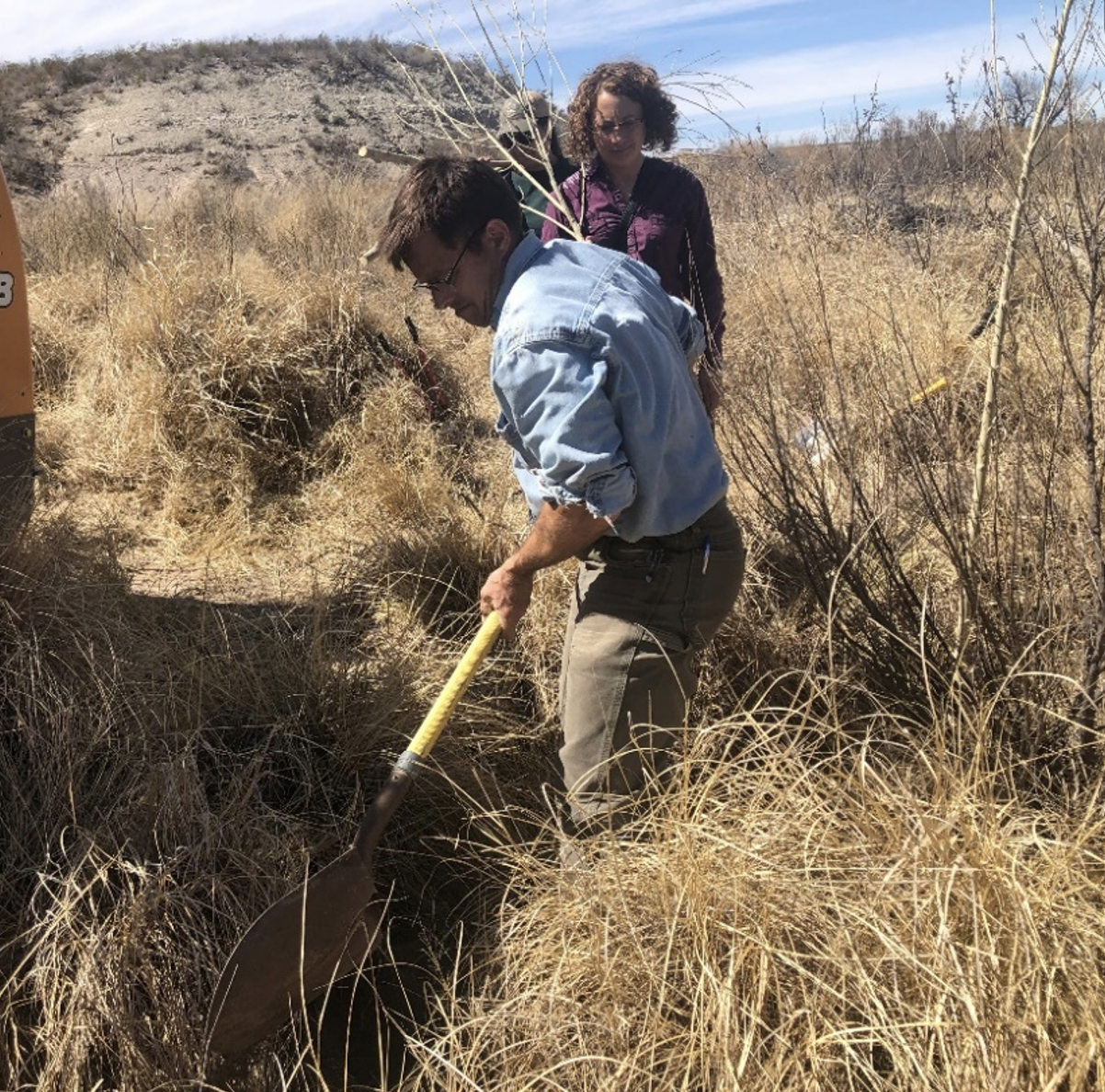Range Restoration - Cottonwood and Willow Pole Planting
By Dr. Lynn Loomis
During the past two years, we have undertaken several efforts to reestablish rangeland vegetation cover on Alamito Ranch. The goal is to restore plant cover and productivity to conditions that existed before European settlement in the 1800’s. Restoration efforts will continue in 2024 and beyond.
Cottonwood and Willow pole planting
Most cottonwoods growing in Alamito Ranch are large mature trees. The largest cottonwood has a basal circumference measured at 21 feet, 8 inches. However few cottonwoods have trunks with diameter less than six inches; these are inferred to be young trees. Based on size distribution, the population of cottonwoods is dominated by old trees, with few young replacements. To increase the number of young trees, we planted 30 plant cottonwood poles and 16 willow poles.
Mike Janis (with shovel), Krysta Demere, and Rachael Connally of Texas Parks and Wildlife Department planting cottonwood poles along Alamito Creek. Photograph taken February 2023Saturated soil (mud) clinging to the skid steer auger. Photograph taken February 2022.Water flowing in the creek after the October 2022 storm had recharged a segment of the Alamito Creek riparian aquifer about 2000 feet upstream of the railroad trestle. Four months later, in February, the alluvial aquifer was still saturated with water. With assistance from biologists of the Texas Parks and Wildlife Department, 24 cottonwood poles and 16 willow poles were planted within that reach. Six-inch diameter holes were drilled with a skid steer, poles were dipped in rooting hormone then placed in holes, soil packed around poles; lastly deer repellant sprayed on branches.
Survival of the poles was monitored in April, June, July, September, and November. In November, none of the cottonwood poles had survived, but five living willow poles persisted. Mortality was attributed to the hot temperatures and meager rains of the 2023 monsoon. Rainfall was below normal and poorly timed; follow-up rains that might have sustained plant growth did not occur. Rains in the watersheds of Alamito Creek did not generate enough surface runoff to generate stream flow and recharge the alluvial aquifer.

